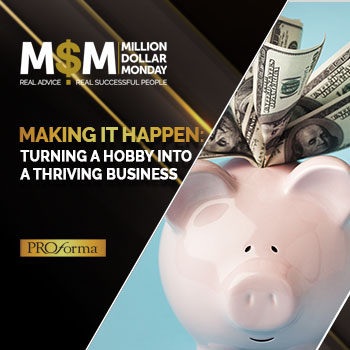T’S NOT THAT easy being green. When Icelandic musician, Bragi Thor Valsson penned this lyric decades ago—which later became famous in the 1970’s by everybody’s favorite frog, Kermit—he couldn’t have known how prophetic the words would one day prove to be.
Aside from providing a lovable children’s puppet with a cathartic means by which to come to terms with his self image, the lyric has, for this writer, come to epitomize the largely unspoken sentiment felt by much of the industry—What exactly does it mean to “go green?”
For many suppliers, such as Fenton, Missouri-based QuickPoint, going green has to do with the incorporation, either in whole or in part, of environmentally responsible materials and/or practices in the makeup of their products and/or services. According to Joe Keely, director of sales at QuickPoint, a green product is one “made from a renewable source … and it should be biodegradable.”
Thus, in an effort to do its part to be less harmful to the environment, this year QuickPoint rolled out its Nature-Ad line, which includes a selection of plastic products made from U.S.-grown corn. Items in the line—drinkware, writing instruments, tools, travel accessories and others—are said to be “compostable and biodegradable.” In addition, the company has introduced an Eco-Ad line, comprising of products made from a blend of natural plant starches, including potatoes, corn, wheat, tapioca, beets and soybeans. According to marketing collateral, Eco-Ad products are “reinforced with less than five percent synthetic polymers, [making the plastics] 100 percent biodegradable.”
While Keely’s explanation of what a green product could be might satisfy some, there are other industry professionals who are wary of ‘green washing’—a term used to describe the labeling of products as eco-friendly when they may not be, according to Jeff Lederer, executive vice president at Prime Line, Bridgeport, Conn. In fact, he sharply condemned the entire notion of
assigning the “green” label to any product. “There is no one true definition of what green means, so we will never say that we’re a ‘green’ company or have ‘green’ products,” he said. Keely, too, admitted to the widespread uncertaintity of what being green means.
For instance, Lederer said a recycled product could not truly be green if the process by which it was recycled proved to be harmful to the environment. “We don’t know what may have gone into recycling that product or that the recycled product later might … not end up in a landfill,” he said.
As part of creating a comprehensive Eco-Promise, which essentially assures distributors of Prime Line’s commitment to making “straightforward, candid claims” about its sustainable products and practices, Lederer said the company has spent a great deal of time and money researching its recently introduced Eco-Design logo. It comes complete with a list of terms and definitions of the components that make up the products in Prime Line’s Eco-Responsible line. For example, terms such as “recycled” and “material substitution” are defined and assigned a corresponding number. If a product was constructed from recycled material and also had some of its materials replaced with environmentally safe ingredients—as was the company’s Recycle Fold ‘Em Up Ruler—the item will appear with the recognizable, circular green arrow generally associated with recycled products along with the numbers one and seven in the arrow’s center. In Prime Line’s Eco-Responsible program, No. 1 is assigned to the term “recycled” while No. 7 is assigned to the term “material substitution.” This way, Lederer said, his company is simply offering information so distributors and end-users can decide what is or isn’t green for them.
IN THE BEGINNING …
Paul Kiewiet, immediate past chairman of PPAI’s board of directors, noted the onset of the industry’s widespread interest in environmental sustainability at 2007’s PPAI Expo in Las Vegas. At this year’s Expo, it was clear the fever had caught on. “Environmentalism resonates with people. We have to live on this planet and so I think we’re seeing our suppliers responding to that by looking for promotional products [that are less harmful to the environment],” he said.
When asked if there was an edict of some kind from the board to PPAI members regarding environmental preservation, Kiewiet said there wasn’t and jovially explained, “This has been totally viral; totally organic, no pun intended.” However, he noted at this year’s Expo, PPAI unveiled its “Guide to Managing Responsibility for Product Safety, Social and Environmental Standards in the Promotional Products Industry.” The 50-page handbook provides suppliers and distributors with the necessary tools for charting the course of bringing environmentally responsible products to end-buyers.
THE RIGHT LOOK FOR THE RIGHT PRICE
When eco-friendly products first came on the scene, the items were generally more expensive and less attractive than their traditional counterparts. However, this is changing. Keely said his company’s Nature-Ad Beverageware sells for about 10 percent less than the identical item made from traditional plastic. “Now, we have developed products that look great and the buyer doesn’t have to pay a premium,” he said. “With this combination, we feel the trend toward our green products has sustainability for the long term.”
In most instances, however, Lederer said price points are generally higher on items that have less of an impact on the environment. “We’ve found items are more expensive when you use organic cotton versus real cotton—it’s 50 percent more expensive,” he admitted.
THE GREEN LAND
Kiewiet was careful not to call what’s taking place a trend, opting instead for “paradigm shift.” Keely, however, expressed more reserve. “I think time will tell which suppliers are in this for the long-haul and which are scrambling to put eco-friendly products in their line because they see everyone else doing it,” he said.
When asked what going green means for the industry going forward, Keely offered this insight: “As eco-conscious Generation Y begins to assume higher-level corporate positions, this movement will continue to become a very viable product category for distributors and suppliers,” he said.
To that end, he admonished distributors to educate themselves on the different terminology used for eco-friendly products [see Organics article, page 112]. “Ask tough questions of your suppliers, such as what is the percentage of synthetic material in their green products and [find out if] they are biodegradable,” he advised.
Opinions on what is or isn’t green may continue to differ long into the next millennium, but, as Kermit eventually resolved: When green is all there is to be … I am green and it’ll do fine, it’s beautiful!/And I think it’s what I want to be—one thing is certain, doing whatever little one can to sustain the environment is where everyone should want to be.



